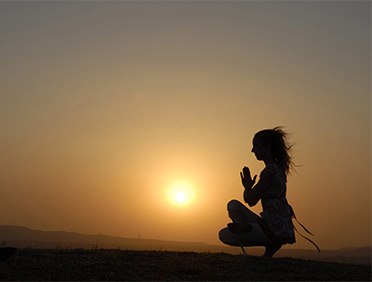When people come across the word yoga, they tend to imagine nice gestures, delicate movements, and posture. However, there is an important but rather generic element of yoga, and it is breath control in yoga. Also referred to as pranayama in Sanskrit, breath control refers to an integral part of the entire yoga process. It is a form of practice that reconciles the body and mind healing practices for the purpose of attaining bodily and mental balance.
What is Breath Control in Yoga?
Breath control in yoga, or pranayama, refers to the conscious regulation of breathing. Prana is the translated word which means ‘life force’ or ‘vital breath’ and ayama if translated means ‘extension or expansion’. Altogether, pranayama is the practice of expansion and regulation of breath with the purposes of physical, mental, and spiritual improvement. In this form of exercise, breath is seen as the connective tissue of the body and the mind. In yoga, learning to control breath will have an influence on your nervous system, mantra and to be more grounded and aware of your thoughts at the present moment.
Why is Breath Control in Yoga So Important?
- Enhances Mind-Body Connection: Breath control in yoga is closely linked with the movement while practicing yoga, providing a constant flow between steps. This not only enhances physical performance but also results in enhancing the sense of bodily feelings and awareness of the body.
- Reduce Stress and Anxiety: The controlled breathing stimulates the parasympathetic nervous system, which helps relaxation and relieve stress. Pranayama techniques like Nadi Shodhana (alternate nostril breathing) or Ujjayi (oxygen) are beneficial for controlling the mind.
- Improves Focus and Clarity: The most effective way to concentrate your mind in the present is always to focus on your breath. This helps with focus, to reduce disturbances and helps to find an inner focus during your practice.
- Boosts Energy Levels: Balancing breath control in yoga guarantees that your body gets the right supply of oxygen that it requires for the purpose of generating energy. Some techniques such as Kapalabhati or ‘skull shining breath’ are very important as they help energize the body and remove fogginess of the mind.
- Supports Physical Health: Breathing exercises also increase lung ability, tone ups the respiratory muscles and improves blood circulation. Breath control in yoga also promotes the elimination of carbon dioxide and other waste gases in the body more effectively.
How to Practice Breath Control in Yoga
It’s not difficult to include breath control in Yoga as your routine practice. Here are a few tips which can be used at the beginning:
Ujjayi Breath (Victorious Breath):
To practice Ujjayi breath, take a deep breath through the nostrils, keep the mouth closed during inhalation. When breathing out, the back of your throat should slightly close and produce the sound of an ocean wave. This technique is also known as victorious breath since it has the capabilities of making the individual breathe more calmly.
Specifically, ujjayi breath is very useful during your asana practice, as it provides a sub-conscious pace and can be beneficial in sustaining the concentration. If you co-ordinate properly with breath control in yoga with the movements then it is helpful in better control of your body and mind.
Nadi Shodhana (Alternate Nostril Breathing):
Nadi Shodhana, also known as the alternate nostril breathing, is a method beneficial in calming the mind and the whole body. To begin with, make sure that you are well positioned and sitting in a comfortable position. Now use your right hand’s thumb to hold the right nostril and breathe in through the left one as deeply as possible. Once you’ve completed the inhale, close your left nostril with the ring finger and exhale through your right nostril.
Carry on with this, switching between the two nostrils each time you take a breath. This breath control in yoga practice is good for synchronizing both the left and right areas of the brain, enhances mental focus and reducing tension and anxiety.
Kapalabhati (Skull-Shining Breath):
The practice of Kapalabhati functions as an energizing breath method that cleanses body and mind through its “skull-shining” mechanism. Inhale deeply and then blow air out your nose; at the same time pull your navel towards the back of your body. Prolong the intensity of the breath by forcefully exhaling it for 20-30 breaths with little variation in breath intervals.
According to yoga, Kapalabhati will help to awaken the energy, sharpen the mind, and improve the functionality of the stomachs. It is an effective breath control in yoga to start your energy for an intense yoga session or for the day that will follow.
Tips for Mastering Breath Control in Yoga
People who have just started learning pranayama should begin with basic techniques of breath control in yoga followed by gradual movement towards complex practices. Your daily commitment to breath control practice should be limited to a few minutes per day for building your proficiency throughout time. Pay attention to your physical state because you should never push or harm your breathing. Creating a regular flowing breath pattern represents the main objective. Breath control in yoga should be integrated into your yoga poses through Asana to achieve better effectiveness in your practice.
Conclusion
Pranayama in yoga provides access to personal transformation while serving as a method for self-discovery. The mastery of pranayama techniques lets you achieve complete yoga potential to obtain physical well-being, mental clarity and emotional stability. People from all levels of yoga expertise can benefit from breath control in yoga because it advances their practice and develops their quality of life. Yoga finds its strength mainly through postures, but breath control in yoga serves as the essential force that enables movement.
Everyday practice of breath control in yoga strengthens your yoga performance and provides extensive benefits from mindful breathing. Begin today to achieve a healthier life while becoming happier through breath control practices.
For more blogs visit on our Nepal Yoga Home blog section.

